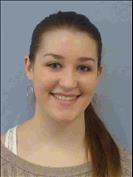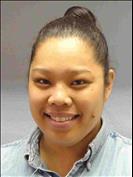Celebration of Scholars
Dance Integration: Day After Night
 Name:
Stacy Pottinger
Name:
Stacy Pottinger
Department: Fine Arts
Type of research: Course project
 Name:
Megan Brancato
Name:
Megan Brancato
Major: Business Management
Hometown: Lake Villa, IL
Faculty Sponsor: Stacy Pottinger
Other Sponsors:
Type of research: Course project
 Name:
Taylor Guy
Name:
Taylor Guy
Major: Spanish
Hometown: Elk Grove Village, IL
Faculty Sponsor: Stacy Pottinger
Other Sponsors:
Type of research: Course project
 Name:
Kayla Spears
Name:
Kayla Spears
Major: Psychology
Hometown: Chicago, IL
Faculty Sponsor: Stacy Pottinger
Other Sponsors:
Type of research: Course project
 Name:
Marie Tredway
Name:
Marie Tredway
Major: Theatre Performance
Hometown: Vallejo, CA
Faculty Sponsor: Stacy Pottinger
Other Sponsors:
Type of research: Course project
Abstract
This project derived from an investigation into Arts Integration, including successful Arts Integration programs in the United States, such as The Kennedy Center’s CETA (Changing Education Through the Arts) and the 2011 report by the President’s Committee on Arts and Humanities, which links arts integrated teaching strategies to greater success in the 21st Century. Through this investigation, an integrated project was developed for the 2014 Dance Theory and Practices course that challenged students to construct and demonstrate understanding of Anita Diamant’s novel, Day After Night through dance. Choreographic assignments were developed from background research into the novel’s setting, from class discourse on themes and questions raised in Daimant’s novel, and from students’ personal connections to these themes. The project culminated in three student choreographed dances which were rehearsed, presented and documented as pre-performance pieces for the November, 2014 dance concert, Points of Departure.
Submit date: March 19, 2015, 8:32 p.m.
